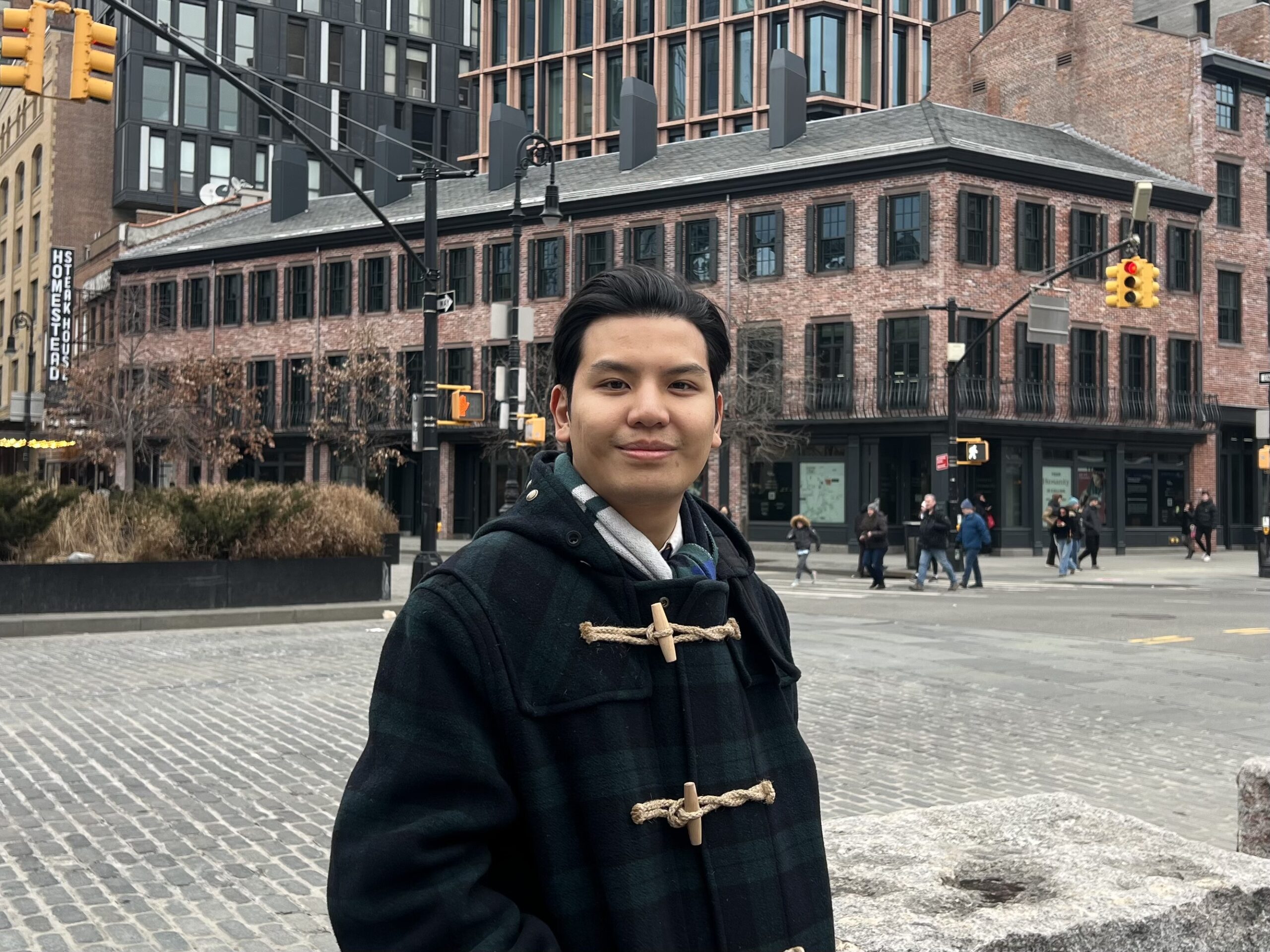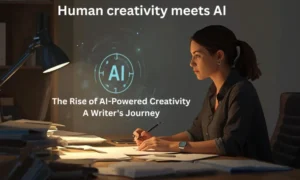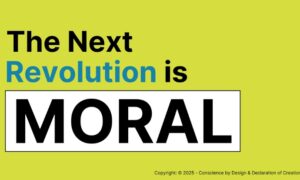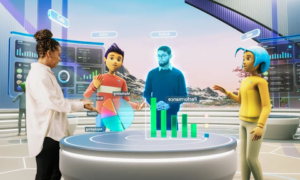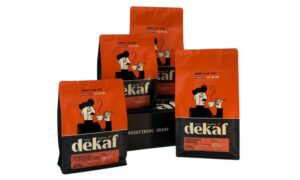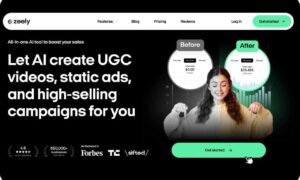In an industry where design isn’t just about aesthetics but about solving complex user challenges, Bryan Oh has built a reputation as a product designer with a keen ability to adapt and innovate. Based in New York City, he fuses creative vision with technical expertise to develop digital experiences that are both engaging and highly functional. With a background in both product design and graphic design, he has applied his skills across a range of industries, including luxury fashion, construction, sports, and technology—each requiring a unique approach tailored to its audience.
At Superliminal Studio, a design and research firm, Bryan has collaborated with an array of clients to create digital solutions that make a lasting impact. His projects range from crafting immersive online experiences for luxury tile brands to developing loyalty programs that improve customer retention for construction equipment companies. His work with Alfargo’s Marketplace further highlights his adaptability, as he has played a key role in shaping marketing campaigns and brand assets for top menswear brands like Drake’s, Drop93, and Brooks Brothers. His ability to blend strategy with creativity ensures that his designs not only serve their intended purpose but also elevate the brands they represent.
For Bryan, effective design begins with understanding people. He emphasizes the importance of addressing user needs across different industries. Whether designing sophisticated, high-end interfaces for luxury clients or building dynamic, interactive platforms for sports communities, he ensures that every project finds the right balance between usability and aesthetics. This feature delves into Bryan’s professional journey, showcasing how his adaptability, technical expertise, and problem-solving mindset enable him to create meaningful digital experiences that drive both user engagement and business success.
Designing with a purpose
A lifelong passion for art and creativity set the foundation for Bryan’s journey into product design. After earning a degree in graphic design, he spent several years honing his skills across industries such as fashion and tech, with opportunities to work for companies like Gap and Google. During this time, he began exploring UX-focused projects, which sparked a deep interest in understanding user needs and designing seamless experiences.
“While I loved the creativity of graphic design, product design sparked a curiosity in user research and user experiences,” Bryan explains. The transition felt like a natural evolution of his skill set, offering him the chance to solve new challenges. Designing for digital products, in particular, opened exciting possibilities to create intuitive and accessible experiences, allowing him to make a meaningful impact in the digital world.
Customizing experiences with empathy
Empathy serves as the cornerstone of Bryan’s ability to adapt his design approach across a wide range of industries. “Designing with empathy is essential,” he explains, emphasizing the importance of deeply understanding the distinct needs of users in each field. While UX design is built on universal best practices, Bryan notes that user priorities can differ significantly. For example, luxury brand customers often seek an elegant, storytelling-driven experience, whereas construction platform users prioritize efficiency and quick access to backend tools like payment systems.
This adaptable mindset has enabled him to tailor his designs to align with the unique challenges of each industry. By focusing on what matters most to the users, Bryan has developed a flexible approach that ensures every solution is not only functional but also deeply resonant with its audience. His ability to empathize with varied user perspectives continues to shape his work as a designer.
Where luxury meets simplicity
Designing for luxury brands requires a careful balance between elegance and functionality, and Bryan approaches this challenge by creating user experiences that reflect the core qualities of luxury—simplicity, intentionality, and impact. “Solving UX problems in luxury involves presenting solutions that often mirror the qualities of luxury itself,” he explains, emphasizing the importance of crafting minimal yet highly effective design elements. His approach prioritizes restraint while still creating bold design solutions in areas to create special UX moments, ensuring that the overall experience aligns with the refined expectations of luxury customers.
To bring this vision to life, Bryan focuses on building immersive narratives through thoughtful use of imagery and interactive elements, particularly on key pages like the homepage. “One of the primary goals of luxury is to deliver an experience that helps bring customers into a strong world building narrative of the brand,” he says. By creating moments of exploration, such as interactive visuals, while keeping product browsing and educational pages intuitive, Bryan ensures the design not only elevates the brand’s high-end appeal but also drives usability and performance metrics, such as improved checkout rates.
Crafting a high-impact platform
For Zelos Arenas, Bryan focused on crafting an interface that captured the platform’s bold, high-energy atmosphere while catering to a competitive and dynamic user base. “The main focus was creating an interface that would reflect the brand’s platform, a high-energy
atmosphere that is bold and competitive,” he explains. This required designing cohesive layouts capable of showcasing a variety of sports tournaments, including key details like round scores and results, all while maintaining visual consistency.
To further enhance the experience, Bryan emphasized celebrating user achievements to amplify the platform’s competitive spirit. Features such as creating triumphal moments for the winner’s screen and badges on profiles to highlight accomplishments were integrated to acknowledge participation and victories. These interactive elements not only fueled excitement but also
reinforced the sense of accomplishment that defines the user experience, making the platform engaging and memorable for its tech-savvy sports enthusiasts.
The designer’s role in AI
The growing influence of AI in product design is something Bryan recognizes, particularly its rapid integration into tools like Figma and Slack. While he recognizes its potential, he views AI as a complement to, rather than a replacement for, human creativity. “It can serve as a tool that can empower but not replace,” he explains, emphasizing that designers bring unique perspectives shaped by personal experiences—something AI cannot replicate.
For Bryan, design remains fundamentally about human connection: people creating for people. He believes this irreplaceable element is at the heart of effective design, even as AI continues to reshape the industry. By leveraging AI as an empowering tool while maintaining the creative and empathetic essence of design, Bryan strikes a balance between innovation and the human touch.
Aligning users and business objectives
For Bryan, a comprehensive design brief is the foundation of every successful project. It serves as a critical tool for aligning user needs with business objectives while guiding the creative process. “By keeping a design brief, it helps me to remember the main goals of the project but also helps me to advocate for the end user and product,” he explains. This structured approach ensures that all stakeholders remain focused on the project’s objectives, even as ideas evolve during development.
Bryan emphasizes that design is inherently iterative, requiring collaboration and open communication with clients. Through this process, he gains valuable insights into what works and what doesn’t from their perspective. “This allows for an opportunity to collaborate and often leads to results that might take different directions, but a more effective one,” he shares. By embracing adaptability and maintaining clarity of purpose, Bryan consistently delivers solutions that balance user satisfaction with measurable business outcomes.
Immersing in new markets for impactful design
A thoughtful, immersive approach defines Bryan’s method for designing in unfamiliar markets, with a strong emphasis on understanding both the audience and the brand. “I try to immerse myself in the brand to focus on understanding the core audience, values, mission, and the narrative it aims to convey,” he explains. This begins with in-depth research into demographics and personas to uncover what resonates most with users, ensuring his designs align with their motivations and expectations.
Whenever possible, Bryan enhances this process by seeking firsthand experiences, such as interviewing individuals who will be directly impacted by the project. These interactions provide valuable insights into user motivations and needs. Armed with this understanding, Bryan
develops tailored strategies to address the unique challenges of each project, delivering solutions that not only elevate the user experience but also remain authentic to the brand’s identity.
The Zelos Arenas project
The Zelos Arenas project stands out as a defining moment in Bryan’s career, challenging him to push the boundaries of his versatility in both graphic design and UX/UI. “The project involved creating a very dynamic and bold branding I wasn’t all too familiar with,” he explains, highlighting how he immersed himself in understanding competition tiers, sports dynamics, and user expectations. This comprehensive research provided the foundation for crafting an interface that captured the platform’s energetic and competitive essence.
Designing for Zelos Arenas required a thoughtful, iterative approach to ensure complex information, such as tournament scores and participation details, was conveyed intuitively. Beyond functionality, Bryan focused on enhancing user engagement by integrating interactive moments that reflected the excitement of competition. “I focused on creating special interactive moments within the app to enhance user engagement and bring the competitive energy of the platform to life,” he says. This balance between clarity, usability, and excitement made the project not only rewarding but also a true showcase of his adaptability and creative expertise.
Bryan’s journey as a product designer showcases his ability to adapt and innovate across diverse industries, from tech and construction to luxury fashion. Looking ahead, he envisions a future where design bridges gaps between sectors, addressing emerging challenges in areas like healthcare and sustainability. With a focus on integrating emotional resonance and technological advancement, Bryan remains committed to crafting human-centered solutions that enhance both user experience and personal engagement. His dedication to innovation and empathy ensures his work will continue to leave a meaningful impact on the evolving design landscape.

